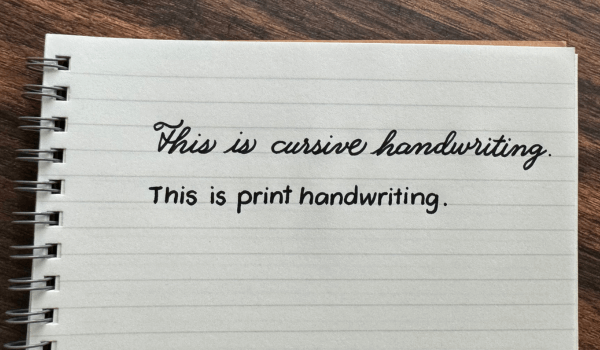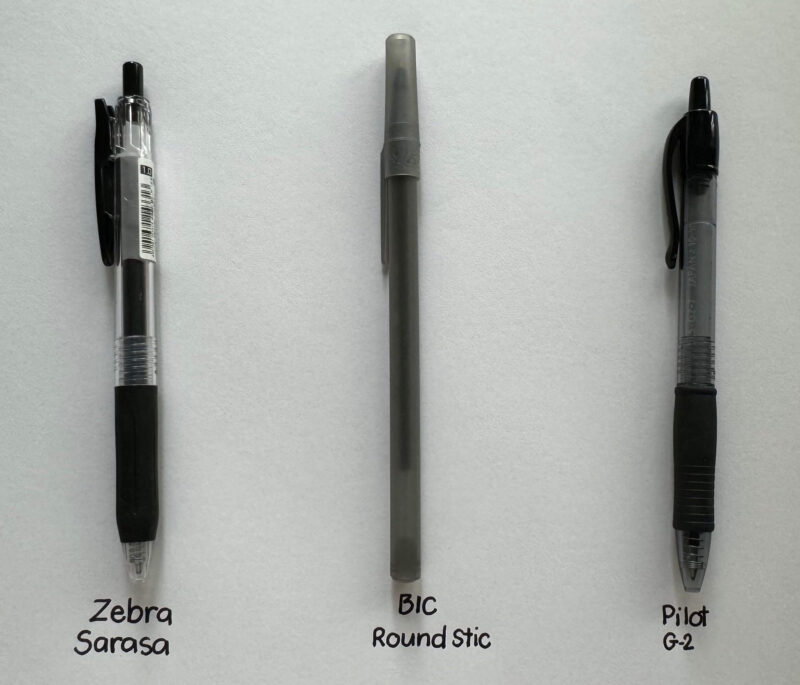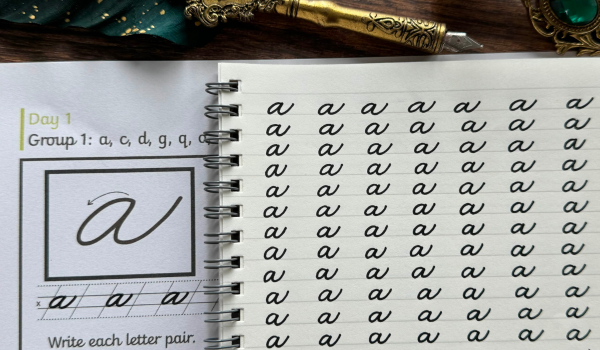
Today you’re going to learn how to improve your handwriting in 2024.
In fact, the 15 tips I’m going to share with you not only made my handwriting way better but also helped my YouTube videos get a million views!
Want to make your handwriting better?
First, take a good look at it. Grab a pen and write down a few lines from a book or something on your phone. Write like you usually do.
Now, let’s see what you’ve got:






After you’re done, try writing the same thing again. This time, paying attention to what you want to improve..
You might write slower, but it’ll look better!
When it comes to handwriting, style matters.
Decide which style you want to improve. There are mainly two styles: print and cursive.

I use both styles mixed together.
You can pick one or mix them too. Find what works for you and practice it!
The right pen makes writing better.
Think about what you like.
Thin lines? I’m loving Bic Xtra Life (1.0mm), Pilot G2 or Zebra Pen Sarasa.

Left-handed? Choose quick-drying pens to avoid smudges, such as gel pens.
Right-handed? Most pens will do.
Try different pens at a store. Write a little with each. Buy a few to try at home.
Your best pen feels great and fits your writing. Keep testing until you find it!”
Improving your handwriting starts with how you hold your pen.
A relaxed grip is key. Your hand muscles shouldn’t be tight.
Hold your pen lightly. Tight grips make writing hard.
Your hand should feel comfy, not stiff. Check often if you’re squeezing too much
If you’re looking to learn the right way to hold your pen, this video is a great demonstration.
Here’s a tip:
A relaxed hand writes better!
Want neat handwriting?
Use lined paper.
It helps keep your words straight. 
You can put notebook paper under plain paper to see the lines. Or just write on the notebook paper.
Always put an extra sheet under your writing paper. It makes writing smoother.
Avoid blank paper if you’re working on your handwriting.
Lines help you write straight. They keep your letters the same size.
Want a structured way to improve your handwriting?
I’ve got just the thing: workbooks! I’ve created workbooks in two styles: print and cursive. Each one is packed with over 100 pages for you to practice on.
Here’s what you’ll find inside:
These practice pages are designed to build your skills step by step.
Whether you’re a beginner or just looking to refine your handwriting, these worksheets are a structured and fun way to improve.
Writing fast can mess up your handwriting. Try to write slower.
It makes your writing look better.
Don’t write too slow, though. That can be hard to read, too.
Aim for a steady pace. It keeps your letters neat and in line.
Take your time. It makes your handwriting clear.
Check out this quick video where I show how to slow down your writing
Remember, writing isn’t a race. Slowing down is the trick to better handwriting.
Ready to write better? Start with some easy drills.
They help make your letters neat and clear.
I improved my writing with these drills. They’re like a warm-up for your hand.
Want to try more?
I have a free worksheet for you. It’s full of fun drills to practice.
These drills are simple. They’ll help you write better and easier.
Grab your free worksheet and start improving today!
Do your letters look different each time?
Try focusing on each letter in lower and uppercase. Make sure they’re the same size and spaced right.
Practice each letter one by one.
Soon, your writing will look neat and even.
If you want to dive deeper into practicing writing the alphabet for both print handwriting and cursive handwriting, you can check out this video
Keep practicing, and you’ll see the difference!
Got your letters down?
Awesome! Now, make them into words and sentences.
You can start with some sentences that have all the letters.
You can also try writing sentences in a workbook:
Consistency is key in handwriting.
Pick a style you like. It can be cursive, print or any style
Try different slopes and sizes. Find a style that feels right.
Then, practice a lot. Fill a page with the same letter, like ‘a’s, then ‘b’s.

Consistency makes your handwriting neat and easy to read.
Stick to your style, whether it’s thin, slanted, or spread out.
Keep it the same. It’ll look great and be easy to read.
Your handwriting is as unique as you are.
It varies, and that’s perfectly fine. Some days it might be tidy, other days a bit messy.
Your handwriting reflects your personality and mood. It’s why people cherish notes from you – they get a glimpse of your essence.
Don’t stress about making drastic changes.
Instead, focus on clarity and legibility in your letters.
Your handwriting style is uniquely yours.
Maintain its clarity, but also let your individuality shine through. That personal touch in your writing is what truly matters!
Improving your handwriting? Make it a daily habit.
The more you write, the better you’ll get.
And it can be fun! Here’s how:
#1. Send Messages and Letters: Write to your loved ones or friends. It’s personal and they’ll love it.
Check out this video for inspiration: Handwritten Messages
#2. Start a Bullet Journal: It’s creative and helps you organize.
Create a habit tracker: Habit Tracker Ideas
Put together a to-do list: To-Do List Design
#3. Make Cards: Handmade cards are special.
Write a birthday card: Birthday Card Writing
Create a greeting card: Greeting Card Creation
#4. Keep a Diary: It’s great for reflection and practice.
#5. Handwrite Lists: Make your grocery lists by hand. Drop notes in lunch boxes.
#6. Write During Podcasts or Videos: Take notes while listening or watching.
#7. Write Neatly Always: At work, school, or home, keep your writing neat.
You can learn how to write note-taking more interesting with titles and headings in the following video.
The key is to keep it fun and simple. Explore and find your favorite writing activities.
Stick with them and watch your handwriting improve!
Improving your handwriting can be more efficient when you focus on letters with similar strokes.
It’s easier than going through the whole alphabet.
This way, you learn faster.
For Print HandWriting:
Print Handwriting: Lowercase Letter Groups




Print Handwriting: Uppercase Letter Groups




For Cursive HandWriting:
Cursive Handwriting: Lowercase Letter Groups




Cursive Handwriting: Uppercase Letter Groups






When you practice letters in groups, it’s easier to learn.
You’ll see how they look alike and flow together.
This way of learning is simple and fast.
It helps you get better at writing quicker!
Improving your handwriting can be broken down into three simple phases.
This technique is effective and easy, suitable for all levels.
Here’s how it works:
Write and rewrite until you’re happy with it.
This helps build muscle memory.
My workbooks apply this technique to all worksheet designs, making it easier for you to improve your handwriting
The more you practice, the more your brain remembers. Soon, writing becomes easy.
That’s it – the Top 15 Tips to Improve Your Handwriting!
Now, I’m eager to hear from you:
Did I leave out any important tips?
Or do you have questions about the ones I shared?
Either way, leave a quick comment below right now.

2 Responses
You are amazing!! We’re do you get your color pens? I use the same pens you suggested so that made me feel good. I am learning so much from you. I want to improve my cursive handwriting. Always write block.
Hi Kathy, if you’re interested in trying out the same pens I used, you can find them here: https://www.amazon.com/shop/nhuandaocalligraphy ✨ Happy lettering!